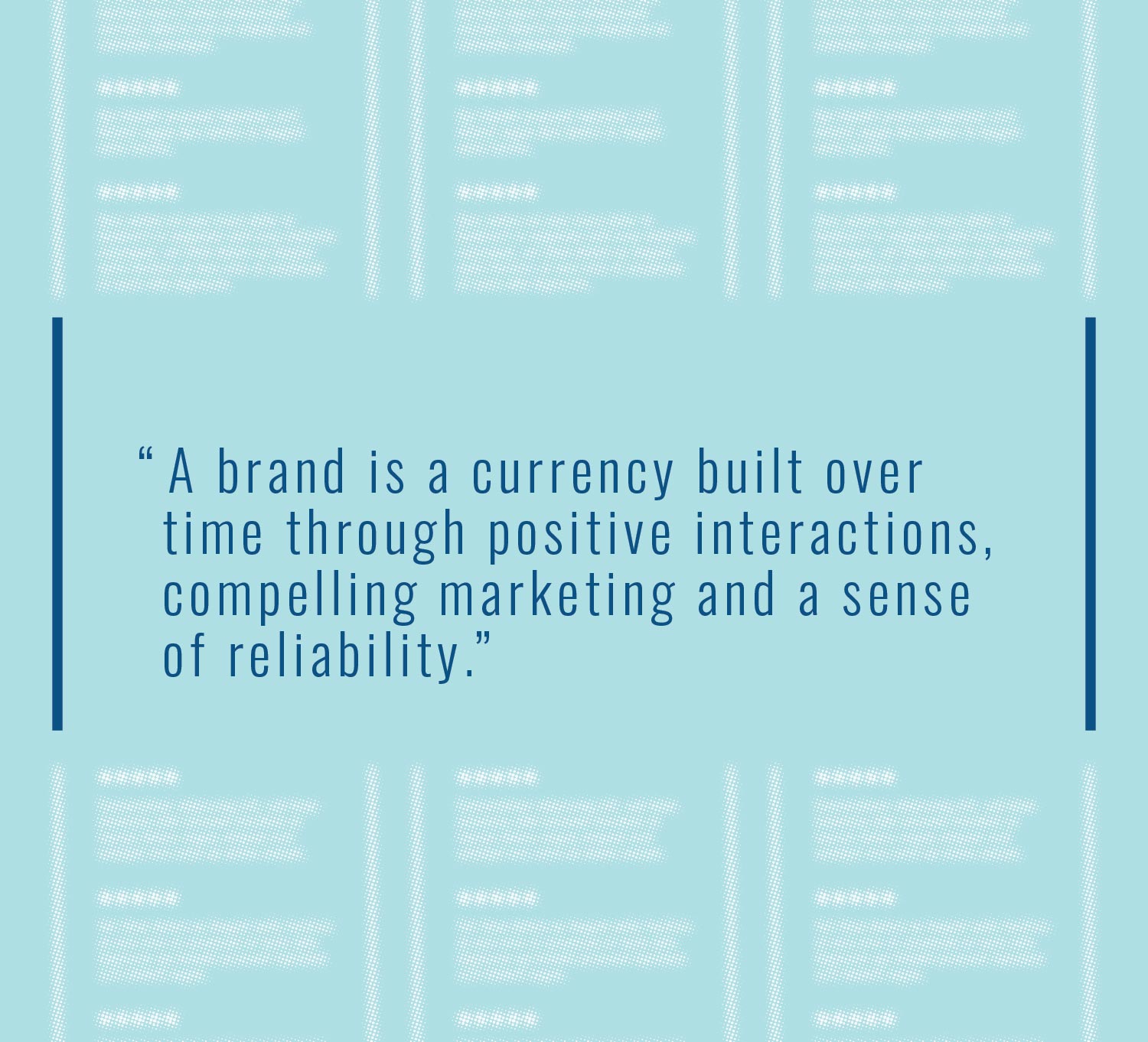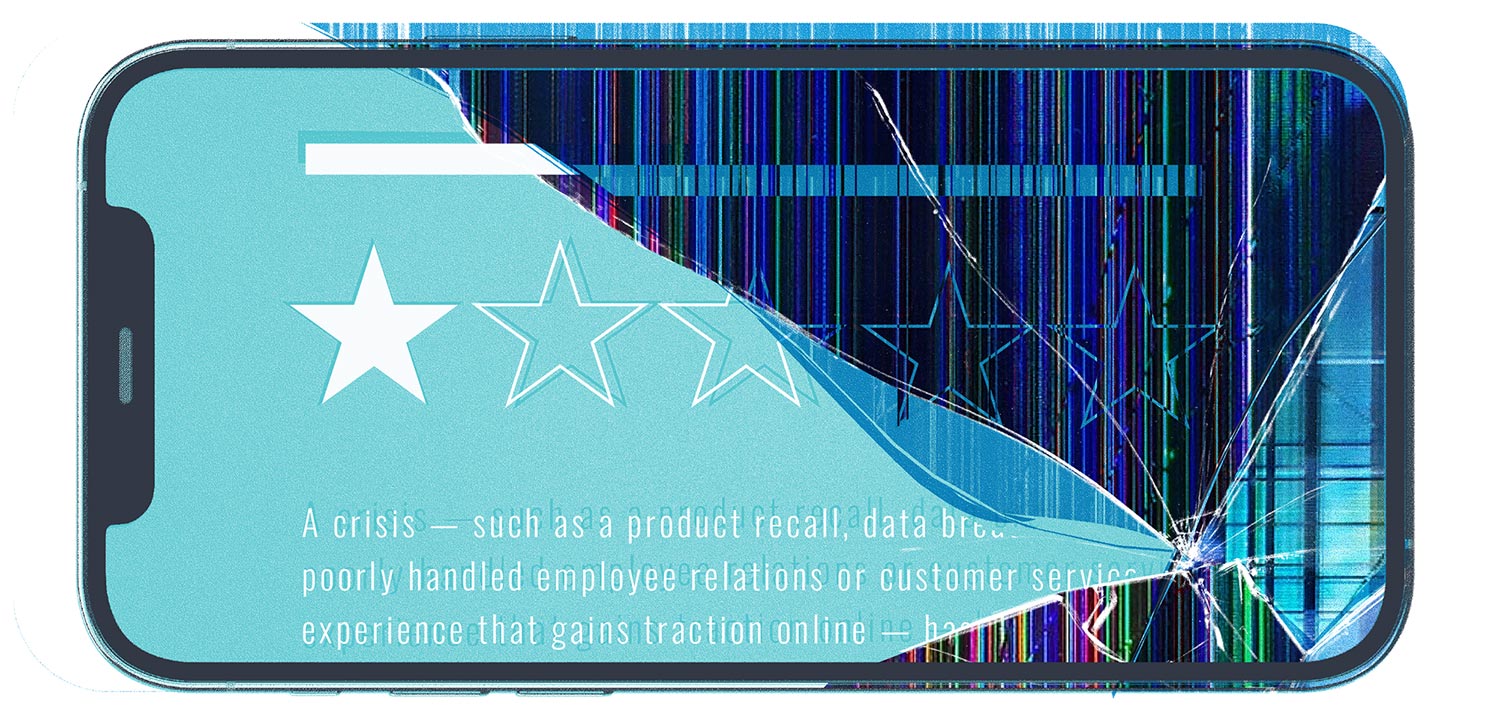CONTRIBUTORS
DIANE CHARVAT
Managing Director, Consumer Claims and Brand Protection, Sedgwick
CHRIS OCCLESHAW
UK Business Development Manager, Brand Protection, Sedgwick
DAVID REED
Global Head of Talent Acquisition, Sedgwick
In the fast-paced and interconnected world of business, a brand’s reputation is a fragile entity that can be shattered in an instant. A crisis — such as a product recall, data breach or poorly handled employee relations or customer service experience that gains traction online — has the potential to erode even the most robust of brands.
The power of a single incident to irreparably tarnish a brand that took years to build highlights the vulnerable relationship between companies and their publics. This article explores the delicate nature of brands, some of the major risks facing brands today, and strategies for navigating the treacherous waters of a reputational crisis.
The trust compact
Trust is the bedrock of any successful brand. It is a culmination of consistent quality, commitment to consumer and employee well-being, and ethical, value-based business practices. A brand is a currency built over time through positive interactions, compelling marketing and a sense of reliability. When a crisis or misstep occurs, that trust is thrust into the spotlight, exposing the fragility of the brand.
With one breach of the public’s trust, a solidly built brand reputation can come crashing down in an instant. Reverberating through the core of an organization, it can affect customer loyalty, market share, financial performance, and talent attraction and retention. In an era when people are increasingly discerning and socially conscious, the tenuousness of a brand’s reputation becomes glaringly evident as consumers and employees consider whether a company prioritizes profits over people’s welfare, satisfaction and experience.
Reputational crises represent make-or-break moments for trusted brands. Whether stemming from product-related issues, ethical breaches, customer dissatisfaction or environmental harm, every move a company makes during a crisis is scrutinized by consumers, stakeholders, regulators, employees and the general public. One misstep in communication, failure to properly address concerns or perceived lack of empathy or accountability can magnify the damage. In the age of social media, when information travels at unprecedented speeds, a brand’s response must be equally swift, transparent and tonally precise.
How a brand handles a crisis is a testament to its character and resilience. Such events can be viewed as not only threats, but as opportunities for brands to earn people’s trust once again by showcasing their commitment to responsibility, customer care and ethical conduct amid less-than-ideal circumstances.

Product recalls: the Achilles’ heel
While often necessary to rectify safety concerns, recalls can trigger a cascading effect that tests the spirit of a brand. Many fear that the act of recalling a product implies a failure in quality control and a perceived violation of the implicit contract between companies and consumers.
The financial ramifications of mishandling a product recall must not be underestimated. The costs associated with withdrawing, replacing, or fixing faulty products — along with related legal battles, customer frustrations and potential declines in sales — can create a perfect storm jeopardizing the stability of the business. The fragility of brands often comes to light as companies contend with the immediate fallout of recalls and grapple with the task of rebuilding consumer confidence.
The aftershocks of product recalls extend beyond the immediate financial hit. If an event is mishandled, the reputational damage can linger, influencing consumer perception for years to come. Brands must tread carefully, employing a delicate balance of transparency, accountability, empathetic service and strategic communication to navigate the intricacies of a recall.
According to recent reports by Sedgwick’s brand protection experts, the issue of recall events is one that companies are facing ever more frequently. Their data show that, in 2023, recall events in the U.S. reached a seven-year high, while Europe saw an increase in recalls for the fifth consecutive year. These upward trends can be attributed to a variety of societal factors, including greater regulatory scrutiny and enforcement regarding the environment and public safety, as well as growing complexities in supply chains and the global economic and geopolitical landscape. The rising incidence of recalls underscores the importance of organizational preparedness for the possibility of such an event to guard against a true brand crisis.

Taking care of customers
Customer service interactions are key touchpoints in the brand experience and contribute heavily to organizational reputation. The way companies treat people when something unexpected occurs or they otherwise need assistance is a direct reflection of brands’ commitment to customers.
![]()
Do they provide user-friendly digital tools with reliable self-service functionality?
![]()
Are support representatives easily reachable, polite and professional?
![]()
Is the resolution process as hassle-free as possible?
![]()
Are mistakes corrected promptly and efficiently?
![]()
Do they fulfill their promises?
Though on a smaller scale than a full-blown reputational crisis, every communication with a customer is a make-or-break opportunity to build or degrade loyalty and goodwill.
Social media has raised the stakes when it comes to the risk factors associated with negative customer experiences. Whereas fallout was traditionally limited to a dissatisfied customer’s word of mouth among their family and friends, today that network extends to everyone on the web. Disgruntled consumers commonly share disappointing brand experiences in scathing online reviews, social posts and viral videos. Some get further amplified in mainstream media and eventually snowball into brand crises. With discerning consumers now researching everything online and the internet having a very long memory, one negative review can have a far-reaching impact — further exaggerating the fragility of brands.
On the flip side, positive customer service experiences build brand loyalty, as satisfied consumers tend to be repeat buyers. Even if an issue occurred, most customers can acknowledge that “things happen” and respect it being resolved quickly, easily and with genuine concern. In fact, some product recalls handled particularly well have been shown to add value to brands, as those impacted felt the companies sincerely cared about the safety of their families and their customer experience. It’s a fine line between a good customer experience and a bad one, and companies must stay on the right side of it to protect and preserve their brand value.
Employer branding
An organization’s reputation as an employer is an extension of its commercial brand — and vice versa. When a commercial brand is powerful, its employment brand benefits; when a commercial brand crisis occurs, the employment brand usually suffers as well.
Significant shifts in the workforce over the past few years have brought greater importance to employment branding. In today’s super-competitive talent market, many employees and applicants are looking for more than “just a job”; they want to be part of an organization that reflects their personal values, supports their social status, and gives them a sense of purpose.
To keep up with market expectations and attract and retain top talent, employers are focused on refining their employment brands and promoting themselves and their workplaces in ways that appeal to their target audience and, ideally, reinforce their commercial brands. Younger members of the workforce are especially attuned to whether employers’ stated commitments to employee health and well-being; diversity, equity and inclusion (DEI); and environmental, social and governance (ESG) efforts align with their day-to-day practices. Increased scrutiny of recruiting, employment and business practices by current and prospective employees opens the door for any misstep to become a noteworthy reputational threat.
One area garnering a lot of attention is layoffs. Under any circumstance, termination of a person’s employment and livelihood should be considered a sensitive situation. Regrettably, some companies have recently mishandled the downsizing process by depersonalizing it — with employees learning their positions had been eliminated when, without notice, their security badges wouldn’t let them into the office or their network login credentials were deactivated. And with so many people now working remotely, layoffs that are communicated to employees are often done by email or video and en masse instead of in a one-on-one phone conversation.
Contrary to the stigma once associated with job loss, jilted employees are candidly posting about their negative layoff experiences on social media — creating a firestorm of negative attention for downsizing organizations and degrading both their employment and commercial brands. This has become a serious concern for some of the leading technology companies, which were flying high and growing rapidly for years but had to pare down their workforces in the aftermath of the COVID pandemic. Such missteps have soured some on pursuing employment in the high-tech space and paved the way for opportunities in more stable fields, like accounting and insurance.
Layoffs are but one example of practices that must be handled with professionalism and care to protect brands. In an atmosphere of increased scrutiny, employers are feeling the pressure to not just talk the talk in their recruiting materials, but also to walk the walk in their treatment of employees, job applicants and other stakeholders.

The reputational impact of a cyber breach
Following a cyber-attack, public perception of the targeted company may be affected — particularly when sensitive data is compromised. Customers may question the company’s ability to protect their personal information, leading to a loss of trust and loyalty. Service outages can also cause users to switch to competitors seizing the opportunity to promote their reliability.
The jury is still out on whether news of cyber incidents has become so commonplace that a brand’s reputation is indeed damaged. People tend to view businesses holding a high degree of trust as more susceptible to reputational loss. An online bank, for example, would be more prone to reputational loss than an online retailer.
After a cyber-attack, clear and effective stakeholder communication is key to rebuilding trust and retaining customers. But even more effective for managing reputational risk is proactively and frequently training employees, customers and other system users on how to avoid the human errors that often contribute to data breaches.
–Gerald Cheang, Senior Manager, Forensic Accounting Services in Asia, Sedgwick
The road to redemption
Navigating the aftermath of a brand crisis requires a strategic and thoughtful approach to reputation management. Brands must proactively engage with their publics, acknowledging any fault and outlining the concrete steps taken to rectify the situation. Transparent communication and a commitment to change can rebuild trust, demonstrating the brand’s dedication to the well-being of its customers and employees.
Rebuilding a tarnished reputation is not a quick fix; it requires a sustained and genuine effort. Investing in preventive measures and robust quality control systems becomes imperative to shore up the brand’s resilience. The delicate nature of brands, once exposed, necessitates a comprehensive strategy that involves not only addressing the immediate issue but also implementing measures to prevent future occurrences.
Moreover, brands must consider the broader societal impact of their actions. Ethical conduct, environmental responsibility, care of people and social awareness are increasingly significant factors in shaping consumer perception. Brands that demonstrate a commitment to these values can emerge from crises with a strengthened reputation and a more resilient brand image.

Safeguarding reputations for the long term
In the volatile landscape of business, the fragility of brands is a reality that companies must acknowledge and navigate with strategic finesse. Product recalls, missteps in customer care and employee relations, and other crises can lay bare the vulnerabilities in the relationship between corporations and their publics. However, brands that learn from their mistakes, implement robust risk mitigation strategies, and showcase a genuine commitment to improvement can put the pieces back together and emerge from these challenges stronger than before.
The tenuous ties between brands and their publics require a continuous effort to maintain and reinforce trust. The ability to navigate the complexities of a crisis defines a brand’s true resilience, shaping its trajectory in an ever-evolving marketplace. The fragility of brands demands a proactive and holistic approach to safeguarding reputations and ensuring long-term success in an unpredictable world.
